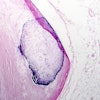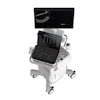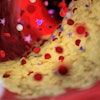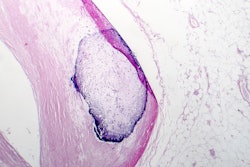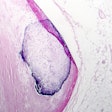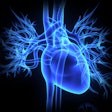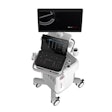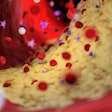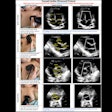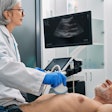The demand for cardiac care is intensifying. Rates of chronic cardiovascular disease have surged around the world, nearly doubling in the past 20 years. High patient volumes and an ongoing shortage of cardiologists are compounding the challenge. In fact, 46% of counties in the U.S. have no practicing cardiologist, with rural areas feeling the gap acutely.
 Morris Panner, president of Intelerad.
Morris Panner, president of Intelerad.
Underserved communities’ lack of access is often further strained by clinician burnout, administrative and financial burdens, and limited resources to address persistent health inequities.
Without new solutions, this trend could drive even higher rates of heart disease and mortality. Untreated cardiac conditions can snowball into other serious health problems that put more stress on patients and providers. Industry pressures show no signs of easing up, so the need for innovative technologies -- such as advanced cardiology workflow and imaging platforms as well as AI -- is urgent.
Essential to the clinical workflow
Cardiac imaging is critical across clinical specialties because it provides diagnostic and therapeutic information for a range of illnesses and medical issues. Though primarily used to identify and treat heart conditions, it also informs the management of systemic disorders that affect the heart, such as kidney disease, COPD, and cirrhosis.
Cardiac imaging’s role takes on added importance in the context of heart disease, where it’s vital to diagnosis and the development of care plans that affect long-term patient outcomes. Clinicians who have access to the heart’s structural and functional details can make faster, more accurate decisions to support complex interventions. Imaging remains essential after the initial stages of care, helping to monitor condition progression, assess therapeutic effectiveness, and detect new or worsening complications.
Precisely mapping the severity and location of heart disease is a crucial component of patient treatment. Physicians rely on thorough scans to guide decisions about options like stent placement, bypass surgery, and valve repair or replacement. Imaging enhances procedural planning in interventional cardiology as well, especially for high-risk, high-cost areas like catheterization labs.
A New England Journal of Medicine study found that patients undergoing intravascular imaging-guided percutaneous coronary intervention (PCI) had a 45% lower mortality risk than those treated with angiography-guided PCI. In short, cardiac imaging is critical to patient health and outcomes. Unfortunately, it is not always readily available.
Serious consequences
Health disparities, inequities, and fragmented workflows limit the accessibility and increased adoption of cardiac imaging. Patients in rural and underserved communities often encounter obstacles that prevent them from receiving specialty care or undergoing advanced imaging procedures. Barriers like geography might restrict the distance a patient can travel, while affordability and lack of available information further narrow treatment choices.
Cardiology providers face a different -- but equally frustrating -- set of challenges, including disjointed workflows, duplicative administrative tasks, and inconsistent reporting standards that make studies difficult to deliver and interpret. Many of them are also reliant on siloed systems that require users to toggle between platforms to retrieve patient data, imaging studies, and reports.
Beyond delaying diagnoses and inhibiting treatment, these issues raise the risk of error, drive staff burnout, and inflate costs. This often slows the broader implementation of enterprise imaging tools and technology, which may appear less like life-saving innovations and more like additions to already-fragmented systems.
When inequities restrict who gets access to care and disjointed processes complicate how it’s delivered, the patients who are most in need are often left behind. Cardiac imaging’s potential to redefine outcomes hits a roadblock. While teleradiology can help expand care availability in some underserved areas, solving these challenges on a larger scale requires a more transformative approach. Integrated cardiac imaging platforms have the power to streamline operations and deliver a connected view of cardiovascular care.
Multitude of benefits
Cardiac imaging platforms, which integrate workflows as well as analytics, introduce a new level of efficiency to address silos and ease the barriers clinicians face. These systems consolidate data across the continuum of patient care into a single workspace so healthcare organizations with newfound visibility can permanently disassemble their patchwork systems.
Centralized orchestration also optimizes workflows and simplifies the entire diagnostic process, from image review to structured reporting and analytics tracking. Benefits extend to remote and geographically dispersed care teams as well. Faster data sharing and collaboration enable timely evaluations and treatment guidance in areas where advanced care is limited.
Even notoriously persistent hospital struggles -- such as operational and financial strain due to staff shortages and redundant infrastructure maintenance -- can become surmountable with the right tools in place. Unified platforms eliminate costly software licenses and automate routine tasks to lighten administrative workloads, so teams experience less burnout and can devote more time to patient care. These enhancements drive better resource utilization, shorter wait times, and enterprise-wide savings, which are important as demand continues to climb.
The past decade has seen a sharp rise in cardiac imaging procedures, such as PET, coronary CT angiography, and cardiac MRI -- a trend expected to accelerate as the U.S. population ages and requires more care. The growing prevalence of imaging procedures will increase the need for highly trained cardiac imagers. Meeting that demand may be tough given staffing deficits, but innovative technology can bridge the gap with clinical tools to boost workflow efficiency.
A centralized, multimodal approach to cardiology gives teams the ability to truly see the whole picture. Funneling a patient’s cardiovascular health history and all relevant data into one unified view saves time and cuts down on routine paperwork. Moreover, it provides a clear payoff. Improved diagnostic accuracy, lower costs, and more time to spend with patients lead to better outcomes and higher quality cardiac care.
Morris Panner is president of Intelerad, an enterprise imaging and software developer.
The comments and observations expressed do not necessarily reflect the opinions of AuntMinnie.com or AuntMinnieEurope.com, nor should they be construed as an endorsement or admonishment of any particular vendor, analyst, industry consultant, or consulting group.
